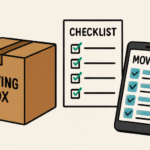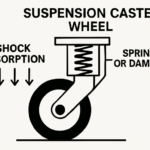Whether you need to understand your customers on a deeper level better or want to increase the likelihood of sales conversion, the right customer feedback tool can help.
Start by determining what kinds of feedback you want to collect and how often. Then, find a customer feedback tool that supports your goals.
Improved Customer Satisfaction
Customer feedback refers to the information provided by those who have purchased a product about their satisfaction or dissatisfaction with it. This feedback can serve various purposes, such as enhancing customer experiences, increasing customer retention, boosting sales, and attracting new customers.
Customers are more inclined to establish loyalty towards a brand when they feel their voices are heard and their opinions are valued. One effective way to achieve this is by collecting and acting upon customer feedback, which can easily be done using customer feedback tools.
These tools allow you to create quick and easy surveys for customers to complete. It’s also important to survey key touchpoints in the customer journey, such as after a purchase, after onboarding or training, and after a product update or feature launch. Many customer feedback tools offer automated email surveys or exit-intent popups that can be triggered in these scenarios. Using these tools to gauge customer loyalty with a Net Promoter Score (NPS) survey, you can use these tools.
Increased Customer Retention
Customers are much more likely to stick with you when they feel satisfied. This means you can grow your business more quickly with a stable base of loyal customers. Getting feedback from your existing customers helps you identify areas of your product or service that need improvement so you can fix them and continue to make your clients happy.
Customer feedback can also help you identify which verticals to focus on when expanding your business. This is important for small businesses that are unsure about what their target audience wants from them and may waste money on things that don’t pay off.
To get the best results, collect feedback as often as possible. Many of the better feedback tools will allow you to automatically send feedback forms to your users whenever they visit certain pages, purchase something, or interact with your business in some other way. This will help you build a massive dataset that can be easily picked and categorized by different teams so they can take action on the feedback as soon as possible.
Increased Revenue
Customer feedback is one of the best ways to grow your business. The insights you gather help you create and refine products that resonate with your audience and customers, ultimately leading to increased revenue.
Many tools can be used to collect customer feedback, from simple website surveys to more advanced behavioral analytics tools such as eye-tracking and screen recording. However, it’s important to choose the tool that will be most effective for your specific goals and objectives.
For example, consider using an NPS or CSAT score tracker to know what your customers think about a new product feature. Alternatively, exit-intent survey popups are useful for getting feedback from users about to leave your site.
Some tools also include features such as sentiment analysis, which analyzes the underlying emotions in your customer support calls, surveys, online chats, or social media interactions to determine how positive or negative they are. Combined with your other data, this information can give you insight into what changes might be needed to improve your products and services.
Increased Customer Loyalty
In a customer-centric business, loyalty is the most valuable asset you can have. Loyal customers purchase more frequently, spend more, and can refer new clients to your company. According to one study by Bain & Co, increasing the number of loyal customers can boost your company’s profits by up to 5%.
Customer feedback tools can help you identify trends and issues, including product or service problems that may be causing your customers to leave you for competitors. You can prevent churn and foster loyalty by implementing a customer feedback loop and responding to it regularly.
When choosing a customer feedback tool, look for a platform that can be customized to your needs and scale as you grow. UserReport, for example, offers a survey widget that can track customer satisfaction and net promoter scores with demographics and a feedback widget that allows users to vote on ideas that could improve your product (making it easier to prioritize features). This type of customization is essential when trying to meet the unique needs of different user groups.
Increased Market Share
Improving your customers’ experiences and making them more positive can translate to increasing the number of people willing to choose you over your competition. This can increase your market share and help you grow your business.
To be successful, you need a good tool for collecting feedback. Many different tools are available, and each has its strengths and weaknesses. The best one for you will depend on your goals and the type of feedback you want to collect.
For example, you will likely get better response rates if your surveys require minimal completion time. You should also avoid asking too many questions; they can overwhelm your customers.
Certain tools available can automate the process of sending feedback requests. When a customer interacts with your brand, such as making a purchase or contacting customer support, these tools can send out an email or survey to gather their feedback. Such tools allow you to expand your reach to a larger audience and ensure your surveys receive the necessary attention.










